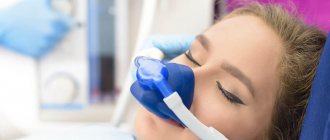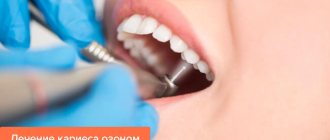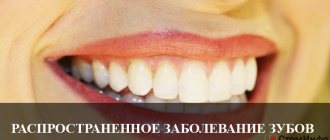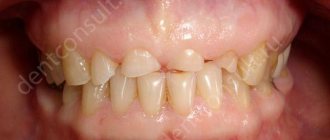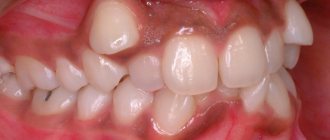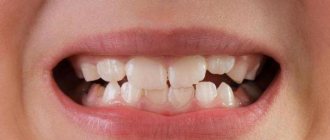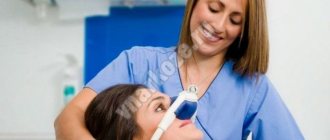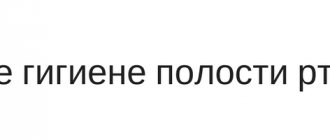Hundreds of thousands of Russians every year take care of their health to one degree or another - they take tests, undergo examinations, purchase pharmaceuticals, and undergo therapeutic or surgical treatment. Dental services stand apart, which even in unaddressed cases can be very expensive. The state allows citizens the opportunity to return part of the money spent on dental treatment. Income tax payers can get back thirteen percent of the money spent on maintaining their health and the health of their loved ones. This text discusses in detail how to return 13 percent for dental treatment, the maximum amount of deduction, we will figure out who can qualify for such a return and where they receive it.
How to get 13 percent back for dental treatment
Health Tax Credits – What is it?
The state allows payers to partially ease the tax burden and receive due tax benefits. It is important to understand that a deduction is not a return of funds spent, but only a reduction in taxes already paid by a citizen, in particular, personal income tax. The procedure for returning money for dental treatment refers to social deductions; now we will briefly explain what they are.
Social benefits allow people to return part of the money spent on drugs and treatment. The list of situations where the state returns 13 percent of costs includes:
- charity;
- concern for future pension contributions;
- insurance of your own life or the lives of loved ones.
However, not everyone can receive this benefit. Tax deductions are provided exclusively for citizens who are officially employed and who monthly contribute 13% of their labor-earned money and other income to the state budget. Simply put, only income tax payers can claim social benefits. Calculation and payment of the tax amount, as well as filing a declaration, are not the responsibility of employees - this is the task of the employing company, acting as a tax agent.
The second condition is that the citizen must have the status of a resident of Russia. It is received by people who have lived in the country for at least 183 days over twelve consecutive months. The exception is for persons traveling abroad for no more than six months to resolve educational or health issues, or to work in offshore oil fields. Representatives of local governments and authorities, as well as security forces, are allowed to leave for a year. Even the fact that foreigners are required to pay personal income tax on income received in Russia does not allow them to return part of these tax deductions.
Tip #1: choose only proven and reliable clinics
If you really expect to receive a payment, then be careful and far-sighted. The clinic you contacted must be licensed, and you must be given a contract. The contract must specify all treatment measures and terms of payment, as well as the responsibilities of the parties. As for the license itself, it is better to immediately request it from specialists; you will only need a copy certified by a seal.
Therefore, contact serious medical claims and large clinics that have been successfully operating for at least several years. There, the likelihood that all conditions will be met according to the law is maximum. But single offices that open and close every day are not the best or safest solution. There are often cases when people turn to the tax office in order to receive payments due by law, and during a document check it turns out that the clinic’s license has expired or part of the costs were spent “under the table.”
Be careful when choosing a clinic
Read an article on our website about the TOP 30 best clinics for dental treatment.
You can return part of the funds not only for yourself, but also if you paid for medical services for everyone who is part of your immediate family - parents, wife or husband, children under 18 years of age. But only on the condition that you yourself have official earnings and are officially registered at work, from where all taxes are regularly paid from your salary (in particular personal income tax, which is also 13%).
Limits and conditions
There are two ways to receive social benefits: return the overpayment in a lump sum, or receive wages that are not subject to income tax for some time. The state also sets a limit on the money spent on visiting doctors - one hundred and twenty thousand rubles (expensive treatment has no restrictions). That is, the maximum that can be received for medical care and the purchase of medicines in the form of social benefits is 15,600 rubles. It is worth understanding that not all the money spent on treatment will return to the payer’s budget. The state returns a maximum of thirteen percent of all expenses, and only in the case when the personal income tax paid is equal to the return or more than this figure. Funds that cannot be returned due to the limit are “burned out,” but a person is not prohibited from filing a return declaration every year if he undergoes treatment annually or regularly purchases medications.
It turns out that a citizen who wants to return money for medical procedures performed or purchased medications needs to submit a declaration next year after the expenses have been made.
For example: a citizen spent one hundred thousand rubles on treatment, 13% of this figure will be thirteen thousand rubles. During the year in which the medical intervention was carried out, the patient earned two hundred thousand rubles and paid the state 26,000 rubles in the form of personal income tax. Thus, social benefits can return to him in full.
A Russian citizen who has received paid dental and other medical services can return part of the expenses to himself or his immediate relatives - minor children, husband or wife, as well as parents. It does not matter whether a person was treated in a private or public clinic or in which pharmacy he purchased pharmaceutical products. The benefit applies to outpatient visits to hospitals and dentists, calling an ambulance, surgical interventions, prosthetics, disease prevention and rehabilitation, diagnostic and treatment services, and cash contributions for VHI policies.
The one hundred and twenty ruble limit does not apply to expensive treatment. If we talk about dentistry, this includes prosthetics, implantation and complex manipulations with the involvement of highly specialized specialists. The decision on whether the medical care was expensive will be made at the clinic and the patient will be given a corresponding document marked with code “2”. It must be submitted to the tax service to confirm serious health expenses. Despite the fact that expensive treatment has no restrictions, the return for it will still be only 13% of the amount spent. A patient who has undergone expensive treatment will be able to return no more for it than he personally transferred in the form of income tax for the year.
Treatment in any hospital can be reduced in cost with social benefits
Tip #5: Make the most of your spending
It would not be amiss to remind you that there is a list of expensive services, which, for example, includes dental implantation, where there are no restrictions on the refundable amount (i.e. 13% is returned from the entire amount spent on treatment). But there are also services where you won’t be able to get back such a large amount of money despite the very large expenses. Therefore, here we will give you advice on how to make your refund amount larger.
For example, you are going to install mouth guards or braces. The treatment is quite expensive; for the same lingual braces you will have to pay at least 250 thousand rubles for just one jaw - if we are talking about the original Incognito brand (USA). To get more money back, start treatment at the end of the year, and arrange an installment payment through the clinic, i.e. divide the entire amount into two parts (pay one part at the end of the year, and the second at the beginning of the next). Why is this beneficial for you? In this case, you can get a 13% return in one year from half the amount and 13% in the second year from the other half of the amount. In total, you will receive, for example, not 15,600 rubles, but twice as much.
You can also estimate and calculate what else you can get a tax refund for if the amount of dental treatment was not so significant. For example, if you are studying or undergoing paid medical treatment in other clinics, then feel free to add up your expenses and increase the refund amount.
Notice
: Undefined variable: post_id in
/home/c/ch75405/public_html/wp-content/themes/UltraSmile/single-item.php
on line
45 Notice
: Undefined variable: full in
/home/c/ch75405/public_html/wp-content /themes/UltraSmile/single-item.php
on line
46
Rate this article:
( 1 ratings, average: 5.00 out of 5)
caries
Consulting specialist
Varlamova Tatyana Vitalievna
Specialization: Dentist-therapist Experience: 4 years
Clinics: paid and free
In public dentistry there is a list of paid services; there is no need to talk about private ones - even an appointment and a simple examination will cost money. From which clinic are the bills eligible for the deduction? The answer is from any. The main thing for the tax authorities is a license to provide medical services. If dentistry has official documents for conducting professional activities, then the demand for a deduction for paid treatment in both a private and free hospital will be considered legitimate.
In what cases is it necessary
A list of medical services for which payment can be partially reimbursed is provided by medical institutions of various forms of ownership. Prosthetics and dental implants are also on the list. Income tax is deducted from the entire payment.
The benefit is given:
- patients who have paid for medical care within the territory of the Russian Federation , if it is among the compensated ones, and also provided it is provided by a licensed clinic;
- citizens who have paid the compulsory medical insurance premium and have stamped checks and contracts issued by a medical institution.
Is social benefits for a pensioner real?
For people of retirement age who are on a well-deserved rest, the issue of at least partial reimbursement of money spent on treatment is more than relevant. However, pensioners are not payers of personal income tax, since pension money is not taxed. What should older people do to get 13% back for dental treatment?
The first method is additional income. Income tax is paid not only from wages, but also from other cash receipts, therefore, a pensioner can:
- rent out property;
- sell property, in particular housing;
- win money or receive any other income on which personal income tax is paid.
The second method is to make a refund for previous years. The country's legislation allows you to return part of the tax paid within three years. Thus, if an employee retired in 2020, and in the same year was engaged in dental treatment, he can apply for social benefits in 2020, 2019 or even 2020. It doesn’t matter that for three of these years the person did not pay a penny of taxes, the main thing is that he was a payer in 2020, when he underwent treatment.
There is one more point regarding the “late return” for three years. A citizen can be retired for ten years and at some point visit the dentist for treatment. If in the same year a person sold property (for example, a cottage) and paid 13% taxes on the transaction, he can also submit documents for a refund. The main thing is that both the transaction and the payment for treatment fall within the three-year deferred period for deduction.
The third way is to ask your family for help. As we have already mentioned, spouses or children of retired Russians can pay for treatment and receive 13% of the amount spent. If an elderly person has a working husband or wife, they can receive the deduction. In another situation, you can apply for a deduction for adult children.
Important point! Payment agreements and payment documents must be drawn up not for the pensioner-patient, but for the working relative, who will receive the benefit.
Deadlines
Let's assume that we fall into the category of citizens who are entitled to a tax deduction for treatment. Then you can calmly collect all the necessary documents and wait for payment. What deadlines will you have to meet?
In general, a tax deduction can be provided within 3 years from the date of receipt of a particular service. Only in practice it is recommended not to “delay” this event. It is advisable to start processing documents within the next year. The sooner you start thinking about how to return 13 percent for dental treatment, the better.
On average, direct processing of your request and transfer of money to your account takes about 4 months. So it is advisable to hurry up and collect all the necessary documents. In reality, it is not that difficult to obtain a tax refund for medical treatment. What might be useful? Where should I go to receive this service?
Official papers for the Federal Tax Service
Citizens can submit a document requesting a refund for treatment annually. The deduction can be obtained for the three years preceding the application to the tax service. If the payer returns funds during this period, he must prepare three packages of documents, a separate one for each year. Federal Tax Service employees will certainly be interested in documents confirming the need for treatment or taking medications, whether the hospital has an appropriate license, as well as payment documents. What package of documents will be required? Let's talk.
To qualify for a social deduction, a citizen must appear at the tax office at his place of registration and take with him the previously collected documents. The package of papers must contain:
- Personal documents – passport, TIN, SNILS.
- A certificate in form 2-NDFL from work confirming taxes paid.
- Completed 3-NDFL declaration.
- A copy of the medical institution's license.
- Checks, payments, bank statements or other documents confirming payment for treatment.
- When returning money for medicines, a prescription from the attending physician.
- An agreement in the name of the applicant for the provision of paid medical services by the clinic.
Filling out documents is an important point. To receive a tax deduction, the 3-NDFL certificate must be filled out correctly, otherwise the tax office will refuse to reimburse the money you spent and you will have to bear the costs without government support.
If a person draws up a deduction not for himself, it is important that his data is included in all payment documents and agreements on payment for medical care. Otherwise, the tax office will refuse to reimburse the money spent both to the patient himself and to the person who paid for the treatment, and the expenses will have to be borne without government support.
Correctly filling out documents is the key to successfully receiving a deduction
Other
In principle, this is where we can finish our list today. From now on, we know how to return 13 percent for dental treatment. But in Russia, very often you may be required to provide additional documents to receive any tax deduction. Is this legal? Not really. But you will still have to “deliver” the missing documents, otherwise you can forget about the deduction altogether.
What additional things can they request? Documents for tax deduction also include:
- SNILS and TIN;
- pensioner's ID;
- military ID;
- children's birth certificates;
- certificate of marriage/divorce;
- educational documents;
- certificate of your registration in the Russian Federation.
Filling out the declaration correctly
3-NDFL is the main document for applicants for social tax. If the paper is filled out incorrectly or the data provided is incorrect, the inspectorate will have the full right to refuse the payer to issue a deduction.
Certificate 3-NDFL
It is important to remember that when filling out the declaration by hand, you can only use blue and black ink and write in capital block letters. Any blots or corrections in the document are prohibited. Citizens must complete the following parts of the declaration:
- The title page, which contains the citizen’s personal data according to the passport, details and other information about the taxpayer.
- Sections No. 1 and No. 2, where you enter information about taxes paid for the year and the amount of deduction.
- Sheets A and E1, which contain information about the tax rate, tax code, indicate the amount of the citizen’s salary, his place of work, etc.
For details on how to fill out a 3-NDFL declaration for a tax deduction, read our article. Let's look at an example of filling out a declaration on paper and electronically.
Video - Example of filling out a declaration on form 3-NDFL for treatment
What is a tax deduction
According to Article 219 of the Tax Code of the Russian Federation, a social tax deduction is an opportunity to return 13% of the amount of payment for treatment.
The right and procedure for obtaining a tax deduction are regulated by the following documents:
- Decree of the Government of the Russian Federation dated March 19, 2001 No. 201 regulates the procedure for obtaining NV. This document provides a list of services that allow you to receive a deduction. This list also includes services such as dental implantation and prosthetics.
- Article 219, paragraph 1, paragraphs. 3 of the Tax Code of the Russian Federation, which states that every taxpayer has the right to receive an annual tax deduction in the amount of 13% of the amount spent on treatment in any medical facility. institution. Social income tax can be provided both to the taxpayer himself and to members of his family: children under 18 years of age, spouse and parents.
For expensive types of treatment in honey. In Russian clinics (in accordance with the list of services), tax deductions are made in the amount of actual costs that have documentary evidence.
How to get the money you owe?
After the standard package of documents has been submitted to the tax service, specialists will conduct an audit and notify the payer of its completion. After this, the citizen must come to the Federal Tax Service again to receive a document stating that the overpayment of taxes has been confirmed. At the same time, you should write a statement asking for the amount of social deductions to be returned to you and choose how the money will be returned.
There are two ways.
Table 1. Ways to receive money from social deductions
| Way | Action plan |
| Method No. 1. At the tax office | If you choose this option, then you need to follow the scheme described above: provide all the listed documents and a statement of desire to receive social benefits. You inform the tax inspector that you want to receive a deduction for the entire amount at once - for this you will need a bank account, card or savings book, where the funds will be returned. You cannot receive social benefits in cash. After all actions have been completed, the tax service has one month to transfer the funds. |
| Method No. 2. In the accounting department of your company | Citizens who choose this method of receiving a deduction begin to receive a salary that is not subject to personal income tax until the amount of the benefit is fully exhausted. This option is convenient because the 3-NDFL certificate does not need to be submitted to the tax office initially. You won’t receive the entire amount right away, but you will be able to enjoy a thirteen percent increase in your salary, albeit temporary. |
The procedure for registering a social deduction
After preparing the necessary certificates and statements, they need to be taken to the tax service. Personal presence for submission is not required ; you can send scanned copies by email. Transferring documents through a representative requires a power of attorney drawn up by a notary. Amended legislation in 2020 allows compensation to be received directly at the place of work.
The application review period is three months. The applicant is notified in writing of the decision made. If it is positive, the requested funds are immediately transferred to a bank account.
